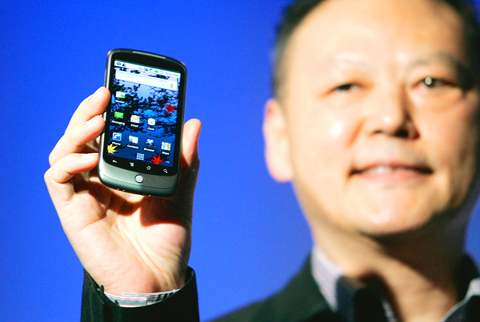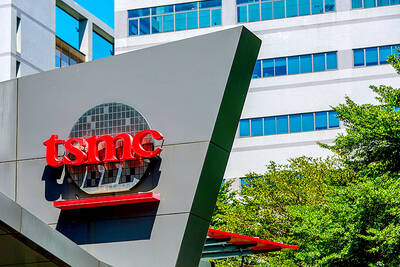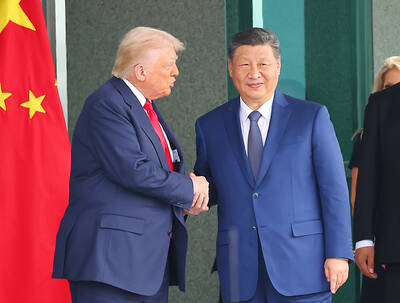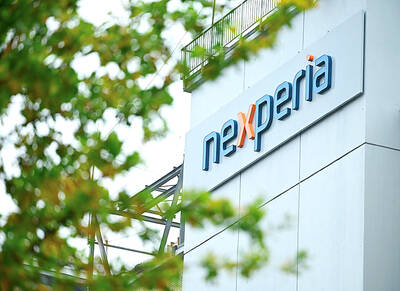HTC Corp (宏達電), the manufacturer of the world’s first phone running Google’s Android system, yesterday posted a 31 percent decline in revenues for the fourth quarter amid rising operating costs.
Last quarter’s net income dropped to NT$5.58 billion (US$175 million), compared with a revised profit of NT$8.09 billion a year earlier, HTC said in a statement. That figure also represented a 2 percent drop quarter-on-quarter.
Revenues dropped 13 percent to NT$41.08 billion in the fourth quarter, from NT$47.38 billion a year ago, meeting the company’s earlier forecast of between NT$40 billion and NT$42 billion.

PHOTO: BLOOMBERG
For the whole year, net profit shrank 21 percent to NT$22.65 billion from NT$28.64 billion in 2008. Revenue fell 5 percent to NT$144.88 billion from NT$152.56 billion in the previous year, said HTC, which is scheduled to give its quarterly outlook during a teleconference with investors on Jan. 26.
“HTC released better-than-expected revenues, but its earnings do not match the pace. This means that the company may spend more on marketing its branded phones than it disclosed,” Lu Chia-lin (呂家霖), who tracks the handset industry for Macquarie Securities, said by telephone yesterday.
In November, Taoyuan-based HTC said it would allocate a bigger share of its revenues — as much as 17.5 percent — to promote its smartphones amid growing competition, compared with 14 percent in the third quarter last year and 11.5 percent in the final quarter of 2008.
New orders from Google Inc and US telecoms operator Verizon Wireless could be the major driving force behind HTC’s strong sales last month, Lu said.
“HTC has began shipping Nexus One to Google last month. We believe the partnership will have a positive impact on HTC, as the gross margin is not bad,” Lu said.
HTC could ship about 2 million Nexus One phones to Google this year as the online search giant seeks to boost sales through a new online shopping service.
Citigroup analyst Kevin Chang (張凱偉), however, was more cautious about Google’s move in the handset sector.
It would be “impossible for HTC to make 30 percent gross margin” with Nexus One, Chang said in a report yesterday.
HTC financial executive officer Cheng Hui-ming (鄭慧明) told Bloomberg yesterday that the phone would have a profit margin similar to that of HTC’s branded devices.
Google’s new phone could cause a severe blow to HTC’s current models, most of which retail for more than US$550. The Google Nexus One is sold for US$529 without telecoms services, or starting at US$179 with a two-year service contract, Chang said.
Shares of HTC inched up 0.4 percent yesterday to NT$373.5, underperforming the benchmark TAIEX, which gained 1.42 percent.

RUN IT BACK: A succesful first project working with hyperscalers to design chips encouraged MediaTek to start a second project, aiming to hit stride in 2028 MediaTek Inc (聯發科), the world’s biggest smartphone chip supplier, yesterday said it is engaging a second hyperscaler to help design artificial intelligence (AI) accelerators used in data centers following a similar project expected to generate revenue streams soon. The first AI accelerator project is to bring in US$1 billion revenue next year and several billion US dollars more in 2027, MediaTek chief executive officer Rick Tsai (蔡力行) told a virtual investor conference yesterday. The second AI accelerator project is expected to contribute to revenue beginning in 2028, Tsai said. MediaTek yesterday raised its revenue forecast for the global AI accelerator used

Taiwan Semiconductor Manufacturing Co (TSMC, 台積電) has secured three construction permits for its plan to build a state-of-the-art A14 wafer fab in Taichung, and is likely to start construction soon, the Central Taiwan Science Park Bureau said yesterday. Speaking with CNA, Wang Chun-chieh (王俊傑), deputy director general of the science park bureau, said the world’s largest contract chipmaker has received three construction permits — one to build a fab to roll out sophisticated chips, another to build a central utility plant to provide water and electricity for the facility and the other to build three office buildings. With the three permits, TSMC

TEMPORARY TRUCE: China has made concessions to ease rare earth trade controls, among others, while Washington holds fire on a 100% tariff on all Chinese goods China is effectively suspending implementation of additional export controls on rare earth metals and terminating investigations targeting US companies in the semiconductor supply chain, the White House announced. The White House on Saturday issued a fact sheet outlining some details of the trade pact agreed to earlier in the week by US President Donald Trump and Chinese President Xi Jinping (習近平) that aimed to ease tensions between the world’s two largest economies. Under the deal, China is to issue general licenses valid for exports of rare earths, gallium, germanium, antimony and graphite “for the benefit of US end users and their suppliers

Dutch chipmaker Nexperia BV’s China unit yesterday said that it had established sufficient inventories of finished goods and works-in-progress, and that its supply chain remained secure and stable after its parent halted wafer supplies. The Dutch company suspended supplies of wafers to its Chinese assembly plant a week ago, calling it “a direct consequence of the local management’s recent failure to comply with the agreed contractual payment terms,” Reuters reported on Friday last week. Its China unit called Nexperia’s suspension “unilateral” and “extremely irresponsible,” adding that the Dutch parent’s claim about contractual payment was “misleading and highly deceptive,” according to a statement